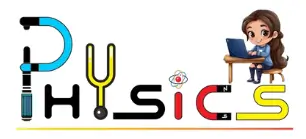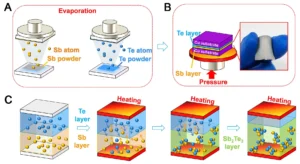In the ever-evolving world of non-volatile memory technologies, Resistive Random-Access Memory (ReRAM or RRAM) has emerged as a promising candidate for next-generation memory solutions. With its potential for high-speed operation, low power consumption, simple structure, and scalability, ReRAM is drawing attention from both academia and industry.
But what really powers this technology under the hood? The answer lies in the conduction mechanism—the way electric current flows through the device, and how that changes during data writing and erasing.
This blog explores the conduction mechanism in ReRAM devices, detailing how switching occurs, the physical phenomena behind resistance changes, and what makes ReRAM so unique in the semiconductor landscape.
What is ReRAM? A Quick Overview
ReRAM is a type of non-volatile memory that stores data by changing the resistance of a metal oxide-based material sandwiched between two electrodes. Unlike traditional flash memory, which relies on charge storage, ReRAM operates by altering the electrical resistance of its active layer.
The basic structure involves:
- Top electrode (TE)
- Resistive switching layer (usually a transition metal oxide like HfO₂, TiO₂, NiO, etc.)
- Bottom electrode (BE)
When a voltage is applied across the electrodes, the resistive layer undergoes a resistance change—switching between a High-Resistance State (HRS) and a Low-Resistance State (LRS), representing binary states 0 and 1, respectively.
Conduction Mechanism in ReRAM: Key Concepts
The conduction mechanism in ReRAM is closely tied to its resistive switching behaviour,
which can generally be categorised into:
1. Unipolar switching – where switching is independent of voltage polarity.
2. Bipolar switching – where switching depends on the polarity of the applied voltage.
The underlying conduction mechanisms can vary depending on the material and device
architecture, but the most widely studied and accepted mechanisms include:
1. Formation and Rupture of Conductive Filaments (CFs)
The most common model explaining ReRAM conduction is the filamentary model. Here’s how it works:
Set Process (LRS Formation):
- When a voltage is applied, it causes oxygen ions (O²⁻) or metal cations (like Ag⁺ or Cu⁺ in conductive-bridge RAMs) to migrate.
- This migration leaves behind oxygen vacancies (Vₒ) or forms metallic filaments.
- These vacancies or metal ions align and form a nano-scale conductive filament bridging the top and bottom electrodes.
- The device enters a Low-Resistance State (LRS) due to the established path for current flow.
Reset Process (HRS Restoration):
- A reverse voltage or higher current disrupts this filament through oxidation, recombination, or Joule heating.
- The rupture of the filament causes the device to return to a High-Resistance State (HRS).
Key Takeaway: The switching involves a reversible physical change in the resistive layer—namely, the formation and dissolution of a conductive filament.
2. Conduction Mechanisms in Each State
Depending on whether the device is in HRS or LRS, different mechanisms dominate:
Low-Resistance State (LRS):
- Conduction is often Ohmic (i.e., current is directly proportional to voltage).
- This suggests the existence of metallic or quasi-metallic filaments, enabling free electron transport.
High-Resistance State (HRS):
- More complex and non-linear.
- Common mechanisms include:
- Space-Charge Limited Conduction (SCLC):
- Occurs when current is limited by space charge in the dielectric.
- Typically seen in trap-filled materials.
- Poole–Frenkel Emission:
- Field-assisted thermal excitation of electrons from trap states to the conduction band.
- Current increases exponentially with the square root of electric field.
- Schottky Emission:
- Thermionic emission over a potential barrier at the electrode interface.
- Tunneling (Fowler–Nordheim Tunneling):
- Under high electric fields, electrons tunnel through the barrier.
- Space-Charge Limited Conduction (SCLC):
The dominant conduction mechanism can change depending on material, device design, and applied voltage.
Material Dependence
The specific conduction and switching mechanisms heavily depend on the material system:
Material System | Dominant Switching Type | Typical Conduction |
TiO₂ | Bipolar | Schottky, PF |
HfO₂ | Bipolar/Unipolar | Filamentary, SCLC |
NiO | Unipolar | Ohmic, SCLC |
Ta₂O₅ | Bipolar | Thermochemical |
Ag/Cu-based | Bipolar | Electrochemical Metallization |
Advanced Topics in Conduction Mechanism
As research advances, several complex factors are being explored:
Multilevel Resistance States
- Fine control over filament diameter or oxygen vacancy profiles allows multiple resistance levels, enabling multi-bit storage per cell.
Quantum Effects and Stochastic Switching
- At nanoscale dimensions, quantum confinement and stochastic behaviour of ion migration significantly affect performance and reliability.
Endurance and Retention Challenges
- Filament shape, stability, and location are statistically variable, impacting cycle-to-cycle repeatability.
- Material engineering and doping are being used to mitigate variability.
Summary: The Art and Science of Resistance
Understanding the conduction mechanism in ReRAM is crucial for optimizing its performance and scaling it for commercial applications. From simple Ohmic conduction in the LRS to field-assisted hopping in the HRS, and from filamentary switching to quantum effects, ReRAM’s operation is as elegant as it is complex.
As we push toward a future dominated by AI, IoT, and edge computing, ReRAM stands out with its high speed, low energy, and scalability. However, unlocking its full potential requires deeper insights into its conduction and switching mechanisms.
Stay tuned for upcoming posts where we’ll explore device modeling, material innovations, and 3D ReRAM architectures.
References & Further Reading
- Waser, R., & Aono, M. (2007). Nanoionics-based resistive switching memories.
- Ielmini, D. (2011). Resistive switching mechanisms in ReRAM.
- Sawa, A. (2008). Resistive switching in transition metal oxides.
- Wong, H. S. P., & Salahuddin, S. (2015). Memory leads the way to better computing.




